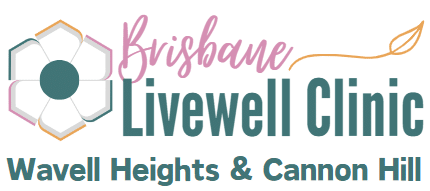Understanding Bowen Therapy
If you're seeking a holistic approach to healing and pain relief, Bowen therapy may be worth considering. This gentle and non-invasive therapy aims to address musculoskeletal and neurological disorders by focusing on the underlying cause, rather than just the symptoms. Let's explore the holistic approach and principles that make Bowen therapy unique.
Holistic Approach to Healing
Bowen therapy utilizes a holistic remedial body technique that targets the soft connective tissue, known as fascia, and the mechanoreceptors in the body. By gently stretching and manipulating the fascia, Bowen therapy aims to promote pain relief, address musculoskeletal issues, and manage related neurological conditions. This approach recognizes that the body is interconnected, and imbalances in one area can affect the overall well-being.
One of the key aspects of the holistic approach in Bowen therapy is treating the whole person rather than just focusing on isolated symptoms. This means that the therapist considers various factors, including physical, emotional, and mental aspects, to develop a comprehensive treatment plan tailored to your specific needs. By addressing the underlying cause, Bowen therapy aims to promote overall healing and well-being.
Principles of Bowen Therapy
Bowen therapy is guided by several principles that shape the treatment process. These principles help the therapist identify the areas of the body that require attention and facilitate the gentle manipulation of the fascia.
One of the fundamental principles is the concept of "less is more." Bowen therapy utilizes minimal and precise movements, allowing the body to respond and initiate its own healing process. The therapist applies light pressure to specific points on the body, known as Bowen moves or procedures, and then provides pauses to allow the body to integrate the changes.
Another principle of Bowen therapy is the concept of "rolling moves." These moves involve gentle rolling actions over muscles, tendons, and fascia, which stimulates the mechanoreceptors and triggers a response in the body. The therapy aims to create a balance between tension and relaxation in the body, promoting pain relief and restoring optimal function.
By adhering to these principles, Bowen therapy aims to activate the body's self-healing mechanisms and facilitate natural pain relief. However, it's important to note that Bowen therapy is not a substitute for medical treatment and should be used in conjunction with appropriate medical care.
Understanding the holistic approach and principles of Bowen therapy provides valuable insight into why it may be beneficial for addressing musculoskeletal issues and managing related neurological conditions. In the following sections, we will explore specific conditions that can be treated with Bowen therapy, as well as the effectiveness, safety, and session details of this unique therapy.
Conditions Treated with Bowen Therapy
Bowen therapy is a holistic approach to healing that focuses on gently stretching and manipulating the soft connective tissue in the body, known as fascia. This therapy aims to address various conditions and promote pain relief in the muscles while alleviating related neurological disorders (Medical News Today). Here are two common conditions that can be effectively treated with Bowen therapy:
Musculoskeletal Pain Relief
One of the primary applications of Bowen therapy is in the relief of musculoskeletal pain. This therapy can help alleviate acute or chronic pain associated with muscles, joints, and movement. It is often sought after by individuals experiencing conditions such as:
- Back pain
- Neck pain
- Shoulder pain
- Knee pain
- Joint stiffness
- Muscle strains
Bowen therapy works by stimulating the body's natural healing response, promoting relaxation, and improving the function of the musculoskeletal system. By gently manipulating the fascia, therapists aim to restore balance and reduce pain.
Neurological Disorder Management
Bowen therapy can also be beneficial in managing certain neurological disorders. While it does not provide a cure, it can help alleviate symptoms and improve the overall well-being of individuals with neurological conditions. Some neurological disorders that may benefit from Bowen therapy include:
- Migraines and tension headaches
- Fibromyalgia
- Parkinson's disease
- Multiple sclerosis
- Stroke rehabilitation
By targeting the underlying fascial system, Bowen therapy aims to enhance the body's self-regulating mechanisms, potentially leading to improvements in neurological function. It is important to note that Bowen therapy is often used as a complementary or alternative treatment alongside conventional medical care for neurological disorders.
When considering Bowen therapy for your specific condition, it is essential to consult with a qualified therapist who can assess your individual needs and develop a personalized treatment plan. They will take into account your medical history, symptoms, and goals to provide the most effective and safe treatment.
Bowen therapy offers a gentle and holistic approach to address musculoskeletal pain and certain neurological disorders. By promoting the body's natural healing processes and focusing on the underlying cause of the issue, this therapy can provide relief and improve overall well-being. If you're interested in exploring Bowen therapy further, consult with a Bowen therapist near you to discuss how it may benefit your specific condition.
Effectiveness of Bowen Therapy
Bowen therapy is a holistic approach to healing that aims to promote overall well-being by addressing various physical and neurological conditions. While limited high-quality scientific data exist regarding the effectiveness of Bowen therapy, existing research suggests positive outcomes in certain areas. It's important to note that more research is needed to draw definitive conclusions on its effectiveness.
Research Findings
Studies on Bowen therapy have reported mixed, though mostly positive, results. Some research supports the use of Bowen therapy for improved flexibility and motor function, while others have shown inconsistent effects on pain responses. However, the current evidence is not well-documented, and more scientific research is required to establish its effectiveness (Medical News Today).
A 2020 study found that Bowen therapy was effective in providing a short-term reduction in pain for individuals with lower back pain compared to a control group. Additionally, a 2018 study showed that about 66% of participants reported very good results after their third Bowen therapy session for back pain. Other studies have also indicated positive outcomes in conditions such as migraines, neck pain, thoracic myofascial pain syndrome, and more.
Short-Term Pain Reduction
One of the significant benefits reported in Bowen therapy research is the short-term reduction in pain. For example, individuals with lower back pain experienced a decrease in pain levels after Bowen therapy sessions (Medical News Today). Similarly, other studies have shown improvements in pain scores, pressure pain thresholds, and neck disability index after Bowen therapy sessions.
It's important to note that Bowen therapy may not provide long-term pain relief for all individuals, and individual responses can vary. The effectiveness of Bowen therapy may depend on various factors, including the nature and severity of the condition, individual characteristics, and the skill of the therapist.
While Bowen therapy shows promise in providing short-term pain reduction and improving certain conditions, further scientific research is necessary to fully understand its effects and establish its effectiveness. If you're considering Bowen therapy, it's important to consult with a qualified bowen therapist or bowen therapy professional to discuss your specific needs and determine if Bowen therapy is right for you.
Safety and Side Effects
When considering Bowen therapy as a treatment option, it's important to understand its safety profile and potential side effects. Bowen therapy is generally considered safe for people of all ages, from newborns to older adults. It is a holistic treatment that aims to treat the whole person and addresses the underlying causes of musculoskeletal or neuromuscular complaints, rather than just the symptoms.
Therapeutic Safety
Bowen therapy is typically used to treat various conditions, including musculoskeletal pain, migraines, fibromyalgia, and respiratory issues, among others (Healthline). The therapy involves gentle, precise movements performed by a trained therapist. These moves stimulate the body's innate healing mechanisms and promote pain relief and improved motor function.
The therapy's non-invasive nature and gentle approach make it safe for almost anyone, regardless of age or health status. Bowen therapy can be used alongside other medical treatments and therapies, although it's recommended to inform your healthcare provider about any complementary treatments you're undergoing.
Potential Side Effects
Limited information is available on the side effects of Bowen therapy. However, it is generally well-tolerated, with only a few reported cases of mild reactions, such as temporary soreness, tiredness, or emotional shifts, following a session. These effects are typically short-lived and subside within a day or two.
To ensure the best possible outcome and minimize the risk of adverse reactions, it's important to choose a qualified and experienced Bowen therapist. They will assess your individual needs and tailor the treatment accordingly. Communication with your therapist is key, as it enables them to adjust the treatment to your comfort and address any concerns you may have.
It's worth noting that some therapists recommend avoiding other muscle-manipulation therapies, such as massage, chiropractic, physiotherapy, acupuncture, or kinesiology, for at least a week after Bowen therapy sessions. This allows the body to fully respond to the treatment and avoid potential conflicting effects. Additionally, it is suggested to drink enough water and engage in light movement after the session to aid in recovery.
Bowen therapy's safety and minimal side effects make it an appealing option for individuals seeking a non-invasive, holistic approach to pain relief and improved well-being. If you have specific concerns or medical conditions, it's always advisable to consult with a healthcare professional before starting Bowen therapy or any other alternative treatment.
Bowen Therapy Sessions
When undergoing Bowen therapy sessions, it is important to understand the duration and frequency of the sessions, as well as the techniques used during the treatment.
Duration and Frequency
Bowen therapy sessions typically last between 30 minutes to 1 hour (Healthline). The duration may vary depending on the specific needs and condition being treated. During this time, a Bowen therapist will perform sequences of small moves on specific sites of your body, allowing ample time for your body to respond to the treatment (Better Health Victoria).
The total number of sessions needed can vary depending on factors such as the condition being treated and individual response to treatment. Some individuals may experience significant improvement after just a few sessions, while others may require ongoing treatments over a longer period of time. Your Bowen therapist will assess your progress and recommend an appropriate treatment plan tailored to your specific needs.
Session Details and Techniques
A Bowen treatment consists of sequences of small moves at varying pressures, each targeting specific sites on the body. These moves are performed with light, cross-fibre maneuvers of muscles, tendons, or ligaments, without any forceful manipulation. The treatment is generally pleasant and does not involve any pain or discomfort.
During a session, you will remain fully clothed and usually lie down on a treatment table. The therapist will gently perform the Bowen moves on different areas of your body, allowing a short pause between each set of moves to give your body time to respond. The pauses are an essential part of the treatment, as they allow your nervous system to integrate the information and make the necessary adjustments.
The specific sites targeted during a Bowen therapy session may vary depending on your condition and symptoms. The therapist will assess your individual needs and tailor the treatment accordingly. Bowen therapy can be applied to various parts of the body, including the back, neck, shoulders, hips, arms, and legs.
It is important to note that Bowen therapy is generally safe and suitable for people of all ages, including infants, children, and the elderly. However, it is always recommended to consult with a qualified Bowen therapist to ensure that it is appropriate for your specific condition.
By understanding the duration, frequency, and techniques involved in Bowen therapy sessions, you can make informed decisions about incorporating this therapy into your pain management or healing journey. Consult with a professional Bowen therapist to discuss your individual needs and develop a treatment plan that is best suited for you.
Case Studies and Anecdotal Evidence
As you consider the potential benefits of Bowen therapy for your specific concerns, it can be helpful to explore success stories and the perceived benefits shared by individuals who have experienced this holistic therapy. While anecdotal evidence cannot replace scientific research, it can provide valuable insights into the experiences of others.
Success Stories
In a case report published in 2016, a 66-year-old woman who had experienced migraines, neck, and jaw injuries from car accidents received 14 Bowen therapy sessions. After the final two sessions, the client reported no symptoms of pain, indicating a significant improvement in her condition (Healthline). This case highlights the potential of Bowen therapy to alleviate pain and promote healing.
Perceived Benefits of Bowen Therapy
Numerous individuals have reported positive outcomes and perceived benefits after receiving Bowen therapy. While these accounts are subjective, they shed light on the potential impact this therapy may have:
Asthma: In a national research program, all 24 volunteers reported that Bowen therapy made a positive difference in their asthma condition. Participants reported a reduction in the frequency and severity of asthma attacks, decreased reliance on medication, and improved response to medication.
Cerebral Palsy: In a pilot study involving children with cerebral palsy, Bowen therapy was found to have perceived improvements, particularly in coordination and flexibility. This study suggests that Bowen therapy may have a broader impact beyond isolated muscles and connective tissue.
Knee and Ankle Pain: A study conducted between June and August 2009 found that 69% of clients who received Bowen therapy for knee or ankle pain reported a partial or full recovery. Only 12% reported no change in their symptoms, indicating a potential benefit in managing these conditions.
Myofascial Pain Syndrome (MPS): ISBT-Bowen Therapy, a specific subtype of Bowen therapy, has been found effective in managing MPS with symptoms lasting for more than six weeks. It has been shown to alleviate pain, improve functional outcomes, enhance quality of life, and relieve mood symptoms (NCBI).
While these success stories and perceived benefits are promising, it's important to remember that individual results may vary. If you are interested in exploring Bowen therapy, it is advisable to consult with a qualified Bowen therapist who can assess your specific needs and provide personalized guidance.
Keep in mind that Bowen therapy is not a replacement for medical treatment, and it is always prudent to consult with your healthcare provider before pursuing any new therapeutic approach. By combining professional guidance with anecdotal evidence, you can make an informed decision about whether Bowen therapy may be a suitable option for your specific concerns.
Last Updated on 10 June 2024 by Brisbane Livewell Clinic









